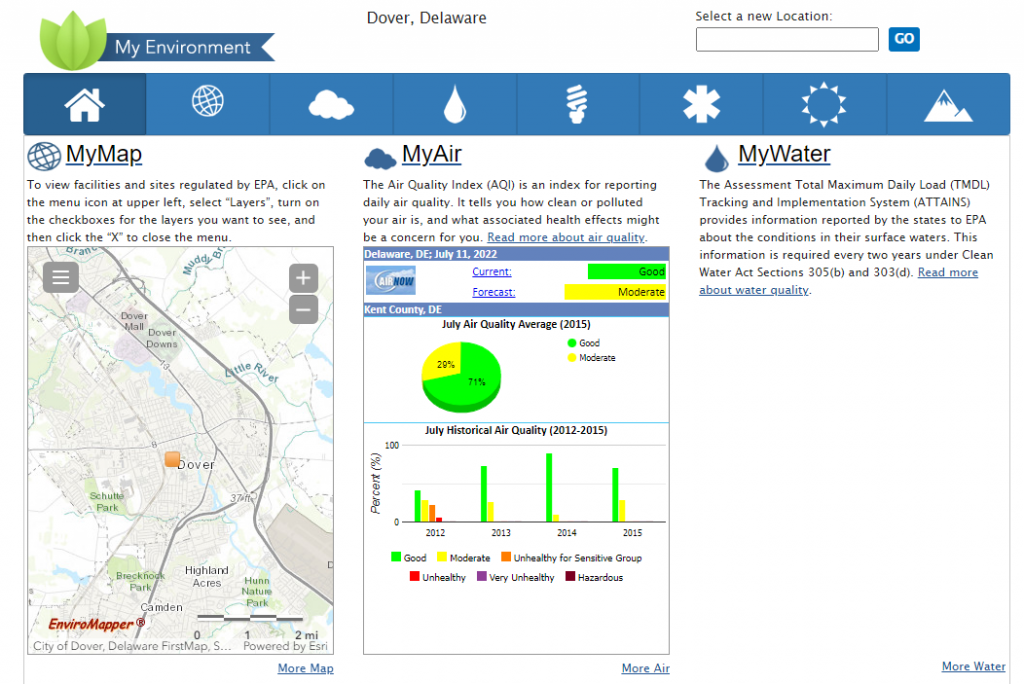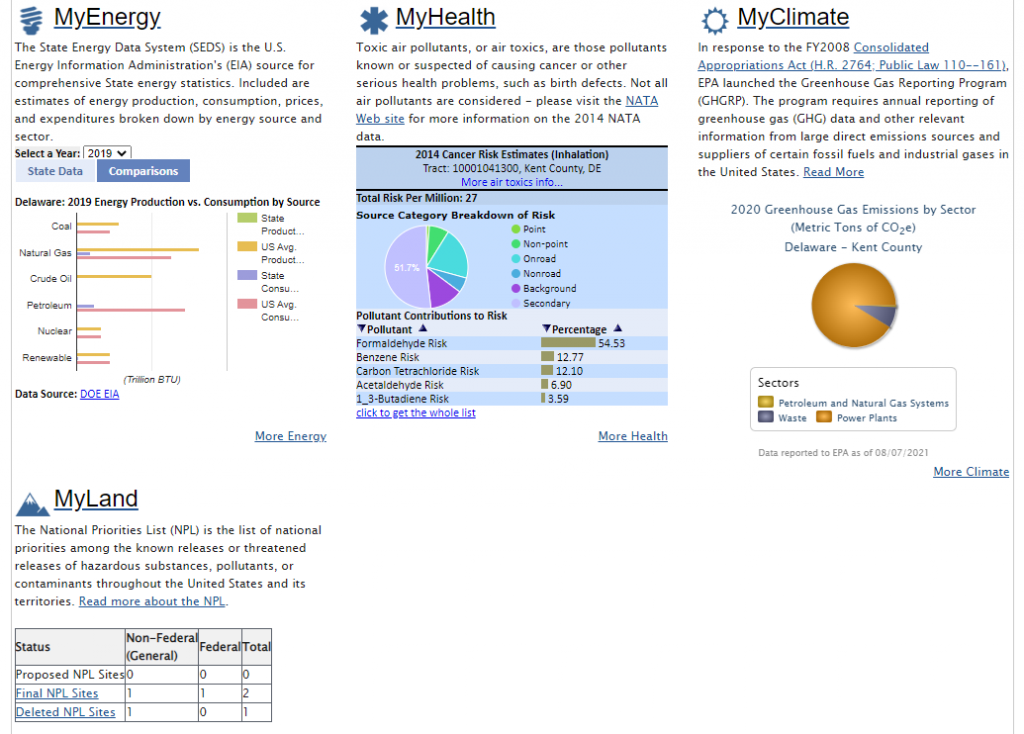
Facebook Twitter Instagram YouTube
Written on: July 13th, 2022 in Education and Outreach
By Olivia Allread, DNREC’s Wetland Monitoring and Assessment Program
Science and reality of our current times shows that certain groups in society carry unequal economic and environmental burdens. The food we eat, the air we breathe, our water sources, and indeed our overall health depend on a clean and sustainable environment. Unfortunately, the benefits of an equitable life are not always shared. Many areas across the nation predominantly made of racial minorities and low-income communities still face challenges with accessing those everyday needs or environmental education. The movement in the United States, and really across the world, to recognize and protect the right to a healthy, clean, and sustainable environment is what is called Environmental Justice (EJ).
Environmental Justice is the fair treatment and meaningful involvement of all people, regardless of race, color, national origin or income, with respect to the development, implementation and enforcement of environmental laws, regulations and policies; and the equitable access to green spaces, public recreation opportunities and information and data on potential exposures to environmental hazards.
U.S. Environmental Protection Agency (EPA)
Although this concept is being focused on now more than ever, the roots of EJ span back to the late 1960’s in the United States, primarily started by people of color. Events during the civil rights and social injustice movements ignited the concept of EJ on multiple levels of society – grassroots, locally, and regionally. The principles set forth stemmed from events such as when Latino farm workers in California fought for workplace rights and safety, or when African American students in Texas protested a city dump in their community. There was movement on the rise during that time that laid the foundation for more organized efforts by minorities to stand up and speak out.
EJ Across Nation
Environmental justice concerns exist all over the country, from urban areas to isolated rural towns. Many low-income neighborhoods and communities of color experience disproportionate impacts involving natural disasters, access to green space, and education. These wide-ranging issues contribute to the gap between “those who have” and “those who have not”. Certain areas may struggle with long-term sustainability, while others are left without the means to improve their situation or environmental education. Some of primary challenges communities at risk face involve:
A key component in addressing EJ concerns is being able to identify the under-served and under-represented communities. On a national level, resources are emerging to ensure that people at risk have a seat at the table in their own future. The EPA EJScreen is an innovative tool that allows users to access a lot of environmental and demographic information in the United States. A user can identify anything from potential environmental quality issues to unemployment rates to traffic proximity. With the MyEnvironment tool, get as specific as your own zip code. This application is more than meets the eye when it comes to what you have access to; users of this tool can see over 60 different of categories of accessible data. Food waste, UV index, energy production, clean diesel programs, cancer risks, and surging seas just to name a few. On an individual level, states and organizations have developed similar mapping tools to focus in on what populations are at risk and what areas need the most change. Through these more specified datasets, stakeholders and community residents alike can expand there efforts into research or even policy. Current resources are out there waiting to be used, start with a simple google search to see what you find.


EJ in Delaware and with Wetlands
Let’s take it to more of a local scale. In Delaware, like many other places trying to navigate EJ, it is a work in progress. Though the first state is small, the variety of vibrant communities in each county deserves representation to the fullest.
A good place to start digging is the state of Delaware’s Social Vulnerability Index (SVI). Social Vulnerability is the extent to which an area’s social conditions affect the response and prevention of natural disasters. With all the movement occurring with climate change and population booms in Delaware, the rankings calculated could help with future planning of socially vulnerable communities. DNREC currently has an internal EJ workgroup dedicated to actions and recommendations that address the areas of service, engagement and outreach. The group is even in the process of creating an EJ mapping tool with in-depth Delaware specific information. Other independent organizations have come out of the woodwork as well. Since 2011, the Delaware Concerned Residents for Environmental Justice has been taking a bottom-up approach of decision-making while trying to unite other grassroots and environmental organizations throughout the state. There are even partnership organizations, such as Healthy Communities Delaware, that feature missions involving work with the community rather than for the community.
When it comes to wetlands, integrating EJ practices into program development while focusing on meeting the needs of underserved communities is a critical tool to build wetland stewards. Vulnerable areas are exposed to social and environmental stressors, but have limited capacity to alter their relationship with them. An important step in the right direction is to empower the concept that anyone has the right to and can change their connection with the environment. Whether it be educating rural populations on wetland benefits, or speaking with urban planners about wetland adaptation and mitigation efforts, everyone has to be included in the conversation. Especially the populations experiencing the most discrepancies and challenges. These kinds of tactics can trickle over to wetland outreach, permitting, city planning, enforcement, you name it. Digital and on-the-ground tools can be utilized together to increase awareness of wetland ecosystems while reducing disparities. EJ provides inclusiveness for all to engage in and shape their understanding of wetlands and why to protect them. The ability to raise awareness about environmental degradation or inequities may very well elevate the voices most affected by them.
What Does The Future Hold
The importance of EJ spans far beyond the reaches of our country’s borders. In October of 2021, the United Nations Human Rights Council adopted a resolution recognizing that a healthy, clean, and sustainable environment is a basic human right. Recognition is the key word here. With more than 150 countries standing behind the concept of this inherent right, the United Nations General Assembly could bring about more ambitious and coordinated action to protect the environment for underserved and underrepresented communities. As the main policy-making sector of the United Nations, the Assembly can use this recognition at many levels of policy and law potentially creating government action and responsibility.
For those who have traditionally lived, worked, and played closest to sources of pollution or social inequalities, the stakes are high. An area’s ability to have successful business and economic stimulation, combined with a sense of representation, can go hand-in-hand with the well-being of its people. The history of the environmental justice movement has already proved that progress can be made with community advocacy backed by back science and the law. Bring in determination and innovation, and we’ve got ourselves a path forward for effective decision making. The dots have been connected. Whether it be in Smyrna, Delaware or Sir Lanka, EJ represents rights that should exist to all of us inherently. Who better to stand up for our communities than the people who live and thrive in them.
Want to see examples of EJ in action? Browse through the resources below to see what is happening across the United States.